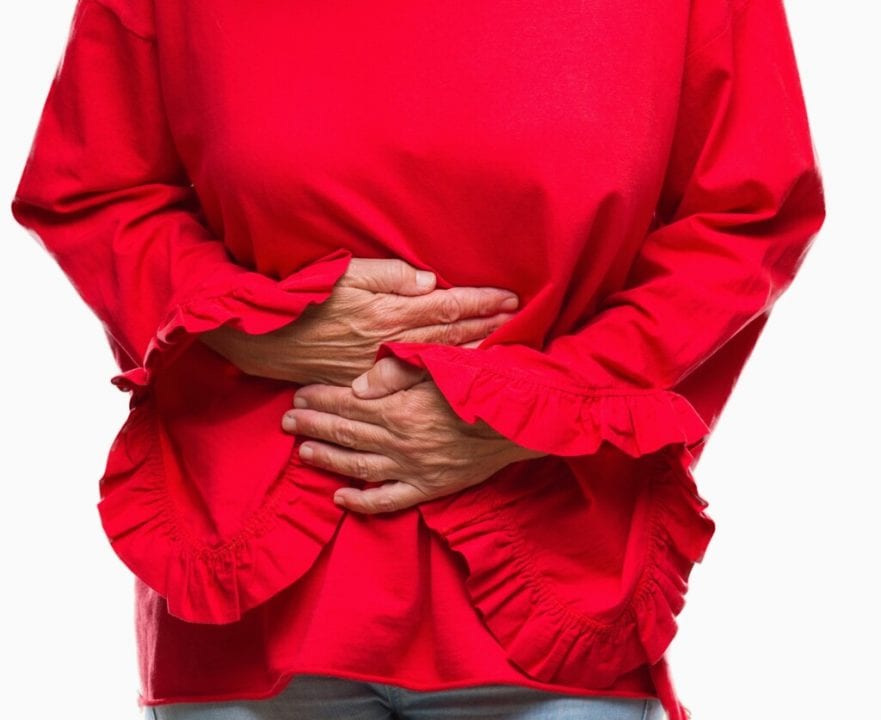The onset of abdominal or pelvic cramping after completing menopause can frighten a woman, and certainly, some causes are life-threatening.
Cramps in the abdomen, several hours after eating out, that are immediately relieved after having a lot of diarrhea, can confidently be chalked up to the meal – if there is no recurrence of the cramps or diarrhea.
But what about new-onset cramps that won’t go away?
“Uterine fibroids and endometriosis are common causes of cramping prior to menopause — and these issues can continue to cause cramping after,” says Dr. Kate Killoran, OBGYN and medical advisor at Your Doctors Online, an online doctor chat site.
Fibroids and Endometriosis
“Menopause usually improves cramping from fibroids and endometriosis, but sometimes it can take a while for the lesions to shrink and eventually resolve, which is what usually happens,” explains Dr. Killoran.
“If you decide to take hormone therapy, that may provide enough estrogen stimulation that fibroids and endo continue to cause cramping.”
Vaginal Atrophy
“Vaginal atrophy can cause cramping and discomfort,” says Dr. Killoran. “The vagina is very sensitive to estrogen, and as estrogen levels drop in menopause, the vagina loses moisture, strength and elasticity — causing cramping and discomfort.
“This is also be a common cause of pain with intercourse or dyspareunia.
“The lack of estrogen in the vagina can make some women more susceptible to vaginal infections like bacterial vaginosis or yeast. This can cause cramping.”
Pelvic Organ Prolapse
“Pelvic organ prolapse can cause cramping,” says Dr. Killoran.
“Time and lack of estrogen contribute to loss of support for pelvic organs which can then drop into the vagina, causing pressure, a bulge and cramping.”
Most Serious Causes
Dr. Killoran explains, “Uterine and ovarian cancers can also cause cramping, as can bladder infections [which] can be more frequent in menopausal women.”
You’re Having New-Onset Cramping in Postmenopause
First of all, this timeline doesn’t automatically mean that the cause of the cramping is gynecological. It can be a coincidence.
For example, inflammatory bowel disease can definitely cause abdominal cramps, or even cramps that seem to be in the pelvic area.
By coincidence, a woman’s first experience with inflammatory bowel disease or some other digestive tract condition can occur at some point after completing menopause. Diarrhea does not need to be present in order for cramping to occur.
However, a gastroenterologist (GI medical doctor) isn’t the first doctor you may want to see for your mysterious abdominal or pelvic cramps.
That’s because you’ll want to have uterine and ovarian cancer ruled out.
If cramping is your only symptom, your OBGYN may recommend a transvaginal ultrasound as a preliminary investigation (along with a clinical pelvic exam).
Then take it from there. If all comes back negative, you can breathe easier upon exploring a possible GI cause.
Further Reading on this Topic
 Dr. Killoran has a private practice and is also a health coach at drkatemd.com. Your Doctors Online offers a free 7 day trial: Ask a doctor questions and get answers in minutes from anywhere 24/7. Learn more here.
Dr. Killoran has a private practice and is also a health coach at drkatemd.com. Your Doctors Online offers a free 7 day trial: Ask a doctor questions and get answers in minutes from anywhere 24/7. Learn more here.
 Lorra Garrick has been covering medical, fitness and cybersecurity topics for many years, having written thousands of articles for print magazines and websites, including as a ghostwriter. She’s also a former ACE-certified personal trainer.
Lorra Garrick has been covering medical, fitness and cybersecurity topics for many years, having written thousands of articles for print magazines and websites, including as a ghostwriter. She’s also a former ACE-certified personal trainer.
Top image: Shutterstock/Aaron Amat
This content was originally published here.


 Dr. Killoran has a private practice and is also a health coach at
Dr. Killoran has a private practice and is also a health coach at 




